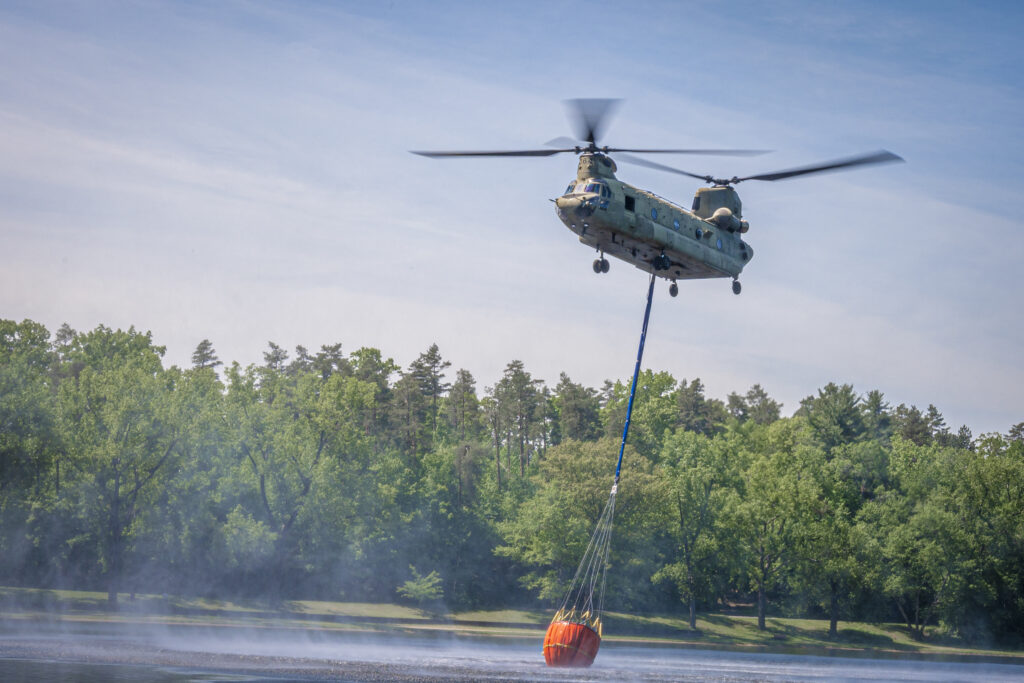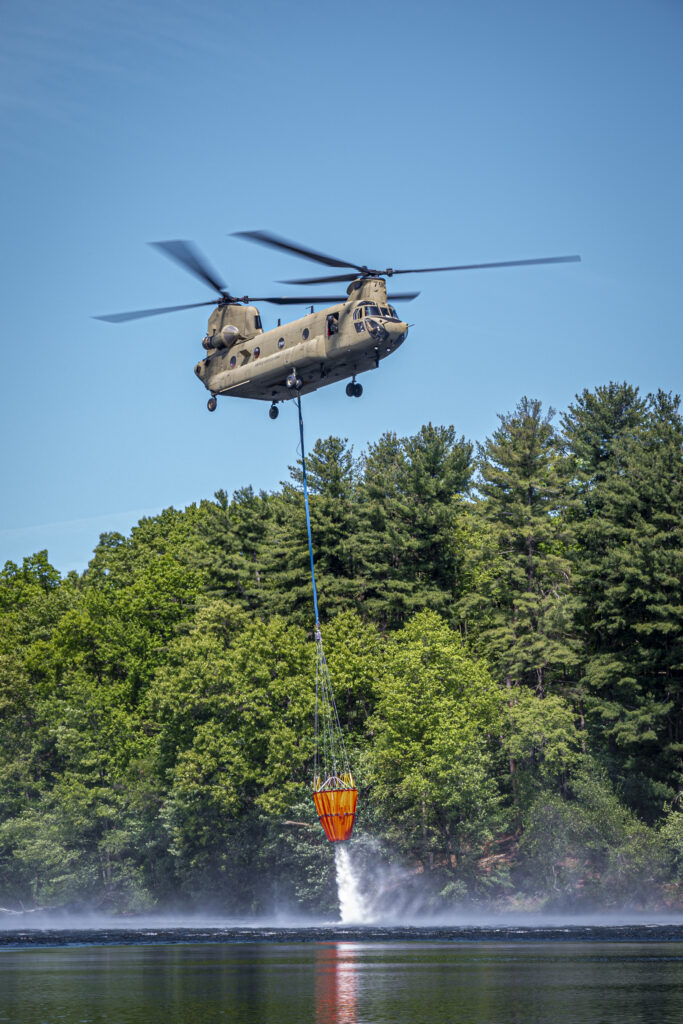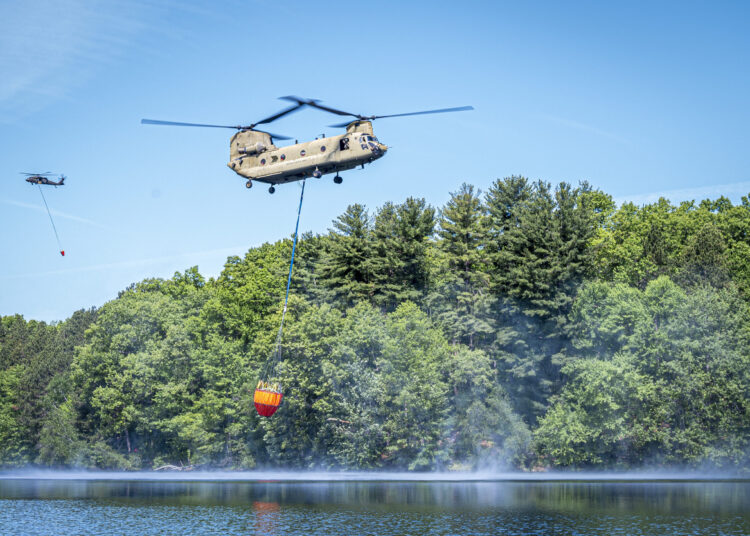Soldiers assigned to the 1-169th Aviation Regiment and firefighters from the Westover Fire Department teamed up for the first time to conduct a joint aerial firefighting exercise at Westover Air Reserve Base May 24-25, 2022.
While the Connecticut National Guard aviators are required to conduct this type of training every year to maintain their readiness in the event of a wildfire, having the ability to train with professional firefighters who serve as the eyes and ears on the ground was a valuable experience for both units.

“This is by far, according to everyone I’ve spoken to, the best way we can do the training,” said Capt. Marc Winchester, a soldier assigned to the 1-169th Aviation Regiment. “Doing it in conjunction with the firefighters has brought the training to a whole new level.”
Tuesday’s training was primarily focused on the pilots and air crews getting refamiliarized with the BAMBI bucket system and the effects of hauling more than 500 gallons of water in a bucket suspended by cables from the aircraft. This was also the only day to incorporate both UH-60M Blackhawk and CH-47 Chinook helicopters into the training.
Pilots first flew their respective aircraft to the Chicopee Reservoir in Chicopee Memorial State Park where the crews would fill the bucket before returning to the training area where orange cones were set up to simulate the location of a fire. Using effective communication via radio, a firefighter on the ground would direct the pilots and crew where and how to dump the water.
Captain Paul Bradford, a Westover Air Reserve Base firefighter, explained that while a bucket of water can be used to douse a single, small problem area, most water drops in major wildfires are used to contain the fire and prevent it from spreading. Having trained fire fighters on the ground to inform air units where to drop their loads can ensure accurate placement and quicker containment.

Wednesday’s training also involved water drops using a UH-60M Blackhawk but was more focused on the firefighters – many of whom have limited experience being the one on the radio to instruct aviation assets. It also provided an opportunity for them to take a ride on the helicopter to get a better understanding on what goes into the aviation aspect of the mission.
The process for conducting a water drop is more complex than it may appear in video and photos. While this exercise offered pristine conditions, most real-world situations would be far more complex. For example, line of sight between the firefighters, pilots, and crew members are typically hindered by forest canopies and smoke, so understanding each other’s terminology and being able to give clear vocal instructions is paramount to mission success.
While these two days provided an excellent opportunity for both the Soldiers and firefighters to hone their skills, the training’s true value came from building relationships and understanding of the different agency’s mission in the event they get called upon to serve in a real-world emergency.
“The National Guard routinely has been called up from many different areas to support fires out west,” said Winchester. “So, we need to be ready not only to support locally, but if things get to the point where they’re calling for all assets, we’ll be ready and available to go.”






